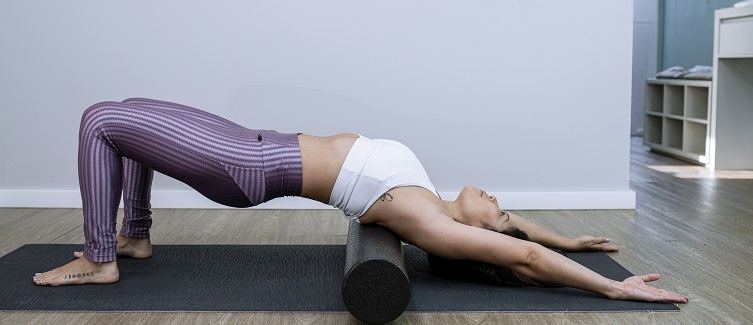To be a great dancer, you need a lot of discipline, plenty of physical stamina, strong muscles, and great artistry. And in addition to these, you need appropriate flexibility.
In your recipe for success, the right balance of strength and flexibility makes your moves look graceful and effortless. It might also keep you from getting injured.
Never Miss a Beat!
Subscribe to Our HealthBeat Newsletter!
Thank you for subscribing!
You can now select the specific newsletters you'd like to receive.
You are already subscribed.
Subscribe to more newsletters in our email preference center.
Sorry, an error occurred. Please try again later.
Get Healthy Tips Sent to Your Phone!
Should Dancers Stretch to Warm Up?
Instead of heading straight to the barre to stretch before beginning a workout, focus on getting your heart rate up. You can do this through jogging, riding a stationary bike, performing bodyweight squats and lunges, or moving through a yoga flow.
The best time to go through a routine of static stretches for dancers is after your workout. Before dancing, mobilizing with dynamic movements like a cat-cow flow can improve flexibility and prepare you for class or rehearsal.
To do cat-cow, start on your hands and knees, with hands under shoulders and knees under hips.
As you inhale, drop your belly toward the floor. Lift your chin and chest, gazing up at the ceiling. You are now in cow pose.
As you exhale, bring your belly toward your spine and round your back up toward the ceiling. Let your head drop, pointing toward the floor. You are now in cat pose.
Slowly flow between these two movements for several rounds. These movements can improve your spinal flexibility. Keep in mind that these exercises should not be painful and should only be performed in a comfortable range of motion.
The Benefits of Foam Rolling for Dancers
Another great way to get your body ready for dancing, or any athletic activity, is through self-myofascial release. Also called foam rolling, this pressure can increase blood flow to an area and decrease soreness.
For dancers, pay attention to your calves, quads, glutes, IT bands, and hamstrings. Rolling your feet over a lacrosse ball can also be very helpful for overworked feet.
Self-myofascial release is also useful after dancing. Rolling after a workout is an excellent time to look for tender spots and focus on them.
Troubleshoot Your Stretching Routine
Stretches for dancers’ flexibility can only take you so far. If you feel like you’re not improving your flexibility, ask yourself these questions:
- Am I stretching optimally? More isn’t always better. In the old days, holding static stretches until it hurt was the norm. Today, we know that holding many stretches longer than 30 seconds does not equal better results.
- Am I stretching correctly? It’s easy to focus on what feels tight, but remember that muscles and tendons connect the entire body. That means tightness in the upper body may affect your legs, or problems with your feet could originate at your hips.
- Am I injured? You can work through tightness and inflexibility by stretching, but an injury will likely require the help of a professional. If you are in pain or struggling with a limited range of motion, consider seeing a physical therapist who specializes in the needs of dancers.
- Am I strengthening in addition to stretching? It’s great to develop stretchy muscles, ligaments, and tendons, but you also need strength in all those elements. So make sure you’re putting effort into building your strength, particularly in your core, hip flexors, and quads. Often, it’s a lack of strength that prevents you from tapping into your full available flexibility – especially in turnout.
- Am I consistent? You can’t stretch occasionally and expect great results. After any dance class, focus on cooling down and stretching. On days you’re not dancing, do some strengthening and stretching, especially if you’re feeling tight or sore.
The Dance Performance Program at UPMC Sports Medicine partners with dancers at all levels to focus on injury prevention, treatment, performance, and safe return to dance — flexibility training included. Our physicians, physical therapists from UPMC Rehabilitation Institute, nutritionists, and more specialize in the medical needs of dancers.
To learn more or schedule an appointment, please visit our website or call 1-855-937-7678.
Sources
Garnet Henderson. “Roll It Out: How to Help Students Develop a Healthy Foam-Rolling Routine." Dance Teacher. Link
Ina Vladova and Yiğit Hakan Ünlü. “On the Importance and Need of Flexibility and Strength Refinement as an Element of Dancers' Training." Journal of Applied Sports Sciences. Link
Lauren Kay. “Denise Wall's Advice on How to Improve and Manage Flexibility—Safely." Dance Teacher. Link
Lauren Wingenroth. “The Dancer's Ultimate Guide to Stretching." Dance Magazine. Link
Leah Bueno. “Could a Tight Back Be Limiting Your Flexibility?" Dance Magazine. Link
About Sports Medicine
An athletic lifestyle carries the potential for injury. Whether you’re an elite athlete or a weekend warrior, UPMC Sports Medicine can help. If you are looking to prevent, treat, or rehabilitate a sports injury, our multidisciplinary team of experts can help you get back into the game. If you are seeking to improve your athletic performance, we can work with you to meet your goals. We serve athletes and active people of all ages and experience levels. Our goal is to help you keep doing what you love. Visit our website to find a specialist near you.
